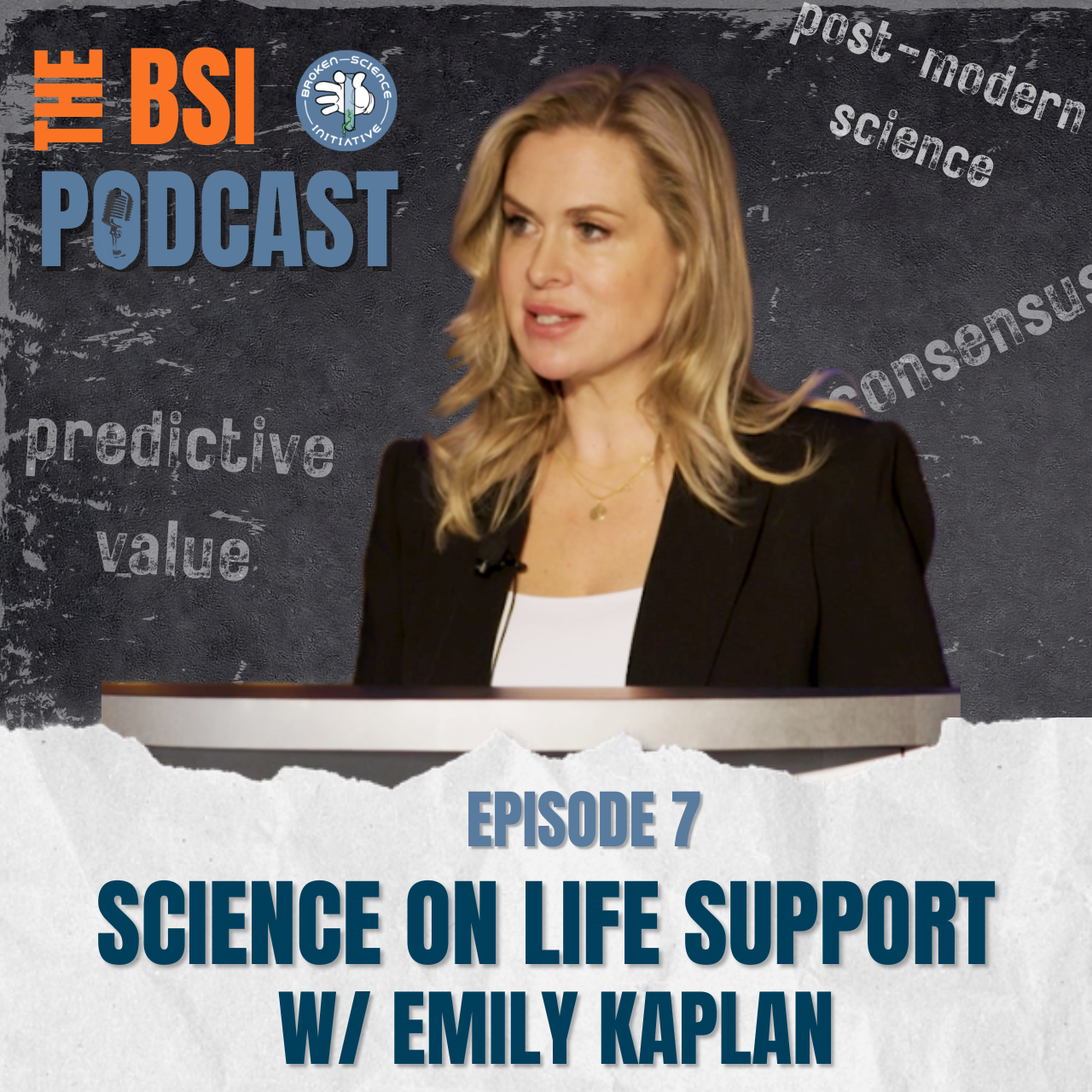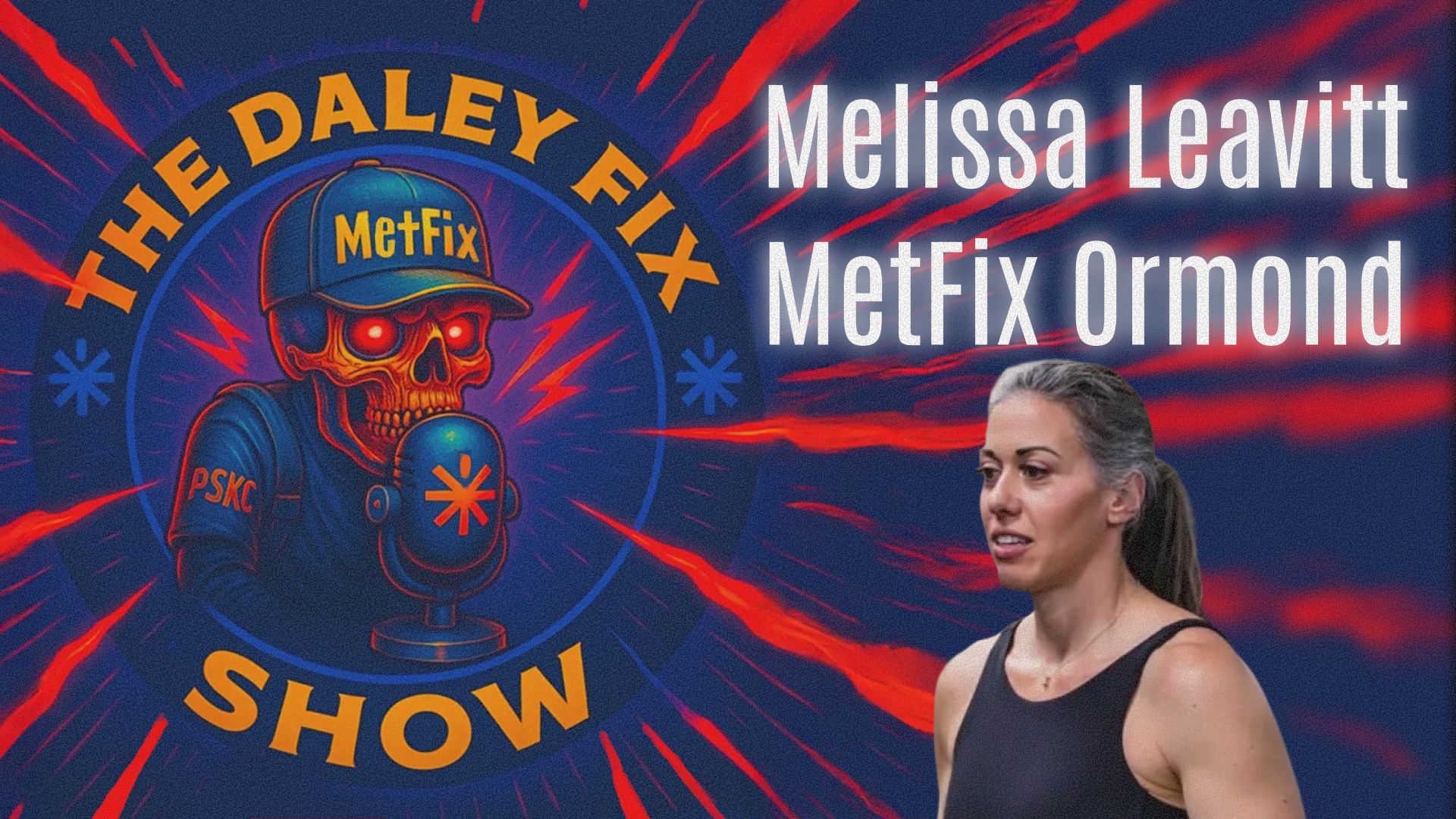The diversion from modern science towards post-modern science began about 100 years ago. Since then things have gone from bad to worse, with bad science threatening our free speech, our right to assembly, our ability to critically think, and the education of the next generation.
This week we look back at Emily’s introduction to the BSI’s event last February in Phoenix, Arizona. In post-modern science, the merits of a study are determined by consensus rather than the study’s predictive value. In her short talk, Emily lays out how post-modern science came to be, and warns of it’s perils.
Transcript
Emily: Hello and welcome. We are so excited that you guys are all here. I’m Emily Kaplan. Greg Glassman and I partnered on the Broken Science Initiative because we believe science is broken. And when I say broken, we are referring to postmodern science. The science that won’t replicate. Predictive value is at the core of what makes science work or fail.
And we’re seeing failure everywhere. We have traced the history of the philosophy of science and have identified the first major fracture happening about 100 years ago. And things have gone from bad to worse. Why this happened and what it has led us here is a part of the story of the Broken Science Initiative.
This is the story of science on life support, and hooked up on the beds nearby are our right to free speech, our right to assembly, our ability to critically think, and every parent’s dream of giving their children an education that allows them to lead independent and free lives driven by impact and purpose.
So there’s a lot at stake, and it all starts with science. But I want to welcome you all first before we get into that. No matter how much or how little you know, our goal today is that you leave here with some new ideas to think about. And as we continue to develop resources, we hope that you’ll join us on this mission.
Greg and I have joked over the last couple of years that we may be the only people who care this deeply about what has happened to science. And over that time, we’ve met other people who are thinking about this, too. So I can tell you from the bottom of my heart, it is really cool that we sold out our first public event, welcoming more than 200 of you.
There’s people standing in the back. We should be able to get chairs for you. Sorry about that. I believe we are all deeply committed to calling out problems that we’ve
found in this postmodern science. And explaining to anyone, not everyone, which may sound familiar to some of you, how this all happens. We have a wealth of important reading curated on our website. It’s BrokenScience. org. And you can see we have tons of reading, and it’s been carefully curated. These are all things that we’ve read that we feel are really important for other people to read.
But, in the coming weeks, we actually have a lot of really cool original content that’s coming, including a podcast, some original investigations, a couple of columns, a video series, some lectures, and you’ll be able to see all of the presentations today under the events page, if you haven’t checked that out before.
It has all of our past events that were private also. And in the coming year, we will have a broken science book, which we plan to turn into a school curriculum, and a docuseries. And we’re doing all of this because this information is too important not to share. It’s also important that we remember that we’re not alone.
Because I think when we think about these big crises or things we don’t quite understand, it can be overbearing. And we’re trying to build this as a community. COVID was a crash course in the hijacking of science.
But honestly, postmodern science was in the ICU long before COVID. And while the bad science showcased during the pandemic would have been enough to inspire this project, we were deeply committed to the work already. And the pandemic served as a proof of concept for the dire need of the education that we’re now developing.
We believe the rights of the individual are paramount in society and that free will is under attack using postmodern science. as a rationale for this encroachment. One of our mantras is when predictive value is replaced by consensus, science becomes nonsense. When I say consensus replacing predictive value, I simply mean that instead of a greater than chance predicted value, we are seeing agreement amongst experts.
And that’s the test of scientific result. Consensus simply means popularity. So you can see why this is all wildly dangerous. For it takes the power of validated results and it replaces it with the opinions of people who have been deemed experts. You may have noticed that we didn’t put bios up for our speakers today.
This wasn’t an oversight. I invite you to think about how someone’s academic credentials influence how you listen to them. And if you so choose, you can look up all of our speakers and you’ll find a wealth of academic successes. They are experts by any conventional standard. But today, they are here because their ideas are worth listening to.
We didn’t put bios out because they are here for their profound ideas and work, and not because of their academic pedigrees. The expert hero worship in science has led to a void of critical thinking. And this is acutely showcased for all of us with things like the Dietary American Guidelines, cancer treatment protocols, the over prescription of statins, which you’ll hear about more in depth from our speakers today, along with a long list of other casualties.
And if you’re not familiar with those examples, we can look at COVID as another model for consensus replacing predictive value. The experts cherry picked data points, used models that were never designed to be predictive, to make predictions, that failed miserably, and yet were not retracted or fixed. And those failed outcomes didn’t seem to matter too much to a terrified and apathetic public that was being told to trust the experts and to believe in the science.
But here’s the thing. The science is never settled. And when you listen today to our speakers, I hope that you’ll keep an open mind about what they have found in their research. It is unconventional, disruptive, and powerful. All qualities that we should be attributing to scientific discovery. They are not popular, but we think their ideas have greater predictive value than the popular alternatives.
John Iannotti’s, whose paper most research findings are false, has been cited more than ten thousand which gave birth to what is now being called the replication crisis. In an analysis of hundreds of studies looking at genes linked to particular diseases, which happens to be one of the largest growth sectors in scientific research.
In only one, one percent of all cases was the linkage found to be true. When we look at cancer and hematology, the research is so bad that only a tiny portion can be validated. Richard Smith, who was the editor of the British Medical Journal, went even farther when he said, The time may have come to stop assuming that research actually happened and is honestly reported, and assume that the research is fraudulent until there is some evidence to support it having happened and been honestly reported.
That sounds extreme? But when we consider what happened last summer, it may not be extreme at all. Last summer, Science Magazine exposed that the foundational work on amyloid beta’s role in Alzheimer’s was entirely fabricated. Their conclusion? The images had been doctored. Literally photoshopped.
So Science Magazine, to make sure that they had this right, hired some outside image experts to evaluate the claims. And they found even more examples of image distortion, and called the work shockingly blatant and highly egregious. Let that sink in for a minute. All of the work that has followed since 2006.
Alzheimer’s research is based on this early assumptive work and it was all fake all fabricated photoshopped Entirely inaccurate. So if we turn to peer review hoping for a safeguard that this scientific Misconduct would somehow be exposed or challenged or corrected What do we find
going on six months later after science magazine exposed this fraud? There is this tiny little note And it is not a correction. It’s not a retraction. Apparently, they’re still looking into it. As Greg will explain in more detail, postmodern science uses tools of validation that are not actually validating anything.
Peer reviewed journals are not validation. They are not proving that the work was done right. Peer reviewers are not paid to investigate, check the math, or any other facts. Peer reviewers are told to assume that no fraud has occurred, and that no scientific misconduct has happened. They are charged only with high level questions, and are not validating any of the results.
Tom Seyfried and Malcolm Kendrick will show you, from a clinical perspective, how broken science plays out in medicine, considering the cancer research and the over prescription of status. James Franklin and William Briggs will bring in the philosophical context to these problems, explaining both concepts and introducing you to a few of our heroes.
Greg Glassman will share the tools and fundamentals of this project by clearly illustrating the difference between science and postmodern science, walking you through the definitions and the key metrics we need more people to understand. Many people have asked me, how did Greg get to this point? And the easy way, easiest way to explain it is that I think he’s actually been working on these problems his whole life.
His first test was recognizing that there was no definition of fitness. Which led to the development of CrossFit, which was the first exercise regimen that used measurable, repeatable, and well defined physical models to increase power outputs over time. Then Greg had the enlightening experience of being peer reviewed, and that experience included when a federal judge has called The largest case of scientific misconduct and fraud that she had ever seen in 35 years on the bench.
That showcased how the tools of consensus were being used in science to manipulate the public and serve private interests. His response to that was to form CrossFit Health, which galvanized doctors around the world to learn more about the ills of modern medicine. And after Greg sold CrossFit in 2020, he could have sailed off into the sunset.
But instead? He doubled down and dove into the history of the philosophy of science and found a friend in probability theory. And in the last two years, he and I have had some major epiphanies about why things feel so off. Why the decisions of the day are more emotional rather than rational, and why we need to do a much better job educating our children on the tools of validation, mainly predictive value, and in doing so provide anyone interested.
With the confidence and the ability to critically think about the decisions that they make in their everyday lives
References
1. https://www.ncbi.nlm.nih.gov/pmc/articles/PMC93033212. https://blogs.bmj.com/bmj/2021/07/05/time-to-assume-that-health-research-is-fraudulent-until-proved-otherwise/3. https://www.nbcnews.com/science/science-news/alzheimers-theory-undermined-accusations-fabricated-research-rcna39843
Support the Broken Science Initiative.
Subscribe today →
recent posts
Medical Society Webinar with David Wiss



